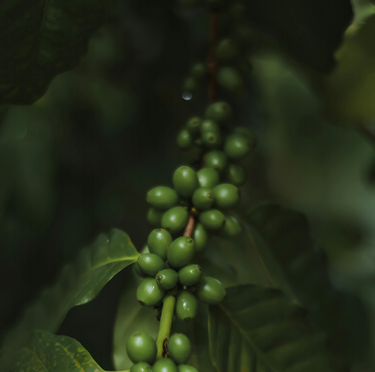Nothing beats a fresh-roasted cup of coffee, and with a home coffee roaster machine, you can unlock delightful roasted flavours with any green coffee beans. We'll cover everything from choosing the perfect roaster to roasting your very own coffee in small batches.
Looking to roast coffee at home? Buy coffee beans online at Rave!
Home Coffee Roasting - Table of Contents
IS HOME COFFEE ROASTING WORTH IT?
Roasting raw green beans at home gives you more control and customisation over the entire coffee roasting process. You can fine-tune roast coffee profiles to draw out desired taste from light, fruity light roasts to deep, chocolatey dark roasts.
Roasting coffee yourself means your daily brew is bursting with aromatic, flavourful beans you simply can't get pre-ground or packaged. While dialing in the perfect roast has a learning curve, we think being your own artisanal coffee roaster is incredibly rewarding.

UNDERSTANDING THE ROASTING PROCESS
Coffee beans undergo incredible flavour transformations through applying heat. Raw beans start very light in colour with a grassy, vegetal flavour. The coffee roasting process brings out sweeter, more complex notes via both chemical changes and physical structure shifts in the cellular bean makeup. These are key phases beans pass through when roasting coffee:
Green to Yellow: Beans lose moisture, turn yellow, and give off a grassy smell.
First Crack: Sugars caramelise and beans make a cracking sound like popcorn.
Light, Medium, Dark Roast: Time after first crack determines depth of roast and flavour.
Second Crack: Second round of cracking signals very dark roast with intense, bittersweet notes.
HOME ROASTERS: YOUR EQUIPMENT OPTIONS
Coffee roasting machines allow home hobbyists to take green coffee from raw to expertly roasted form. But how do you choose the right home coffee roaster model? Important criteria include:
-
Roast batch size: Bigger home roasters like the Gene Cafe handle over 300g per cycle while compact popcorn poppers only roast around 80g. Consider your personal or household coffee consumption before investing. Smaller sample roasters work well for experimenting.
-
Temperature control: Quality home coffee roasters let you program exact time and heat parameters to achieve target roast profiles. Some economic options like stove-top pans offer less precise temperature inputs.
-
Smoke reduction: Look for effective chaff collectors and ventilation to minimise annoying smoke.
-
Added features: Timers, probes for measuring inner bean temperature, and cooling functions help refine the roasting art but add cost.
-
Convenience factors: From hoppers that neatly hold greens to automated mixing paddles that agitate beans, nicer home coffee roasting machines reduce hands-on effort.
Let's compare two widely used home models with different capabilities and price points.
1. Fresh Roast SR540: This drum style electric roaster has good capacity for home use and allows adjusting time, heat in 5% increments. At around £180 it's fairly affordable while still offering helpful functionality.
2. Ikawa Pro: The Ikawa Pro employs precision, software-controlled hot air roasting for exceptional repeatability and data-driven adjustment. You can create or download tons of preset roast profiles and monitor graphs during and after each batch. It's the ultimate tool, but expensive with it's retail price sitting at around £800 depending on the model.
We suggest considering your budget, interest level if you enjoy dialing in tastes, and simply how much freshly roasted coffee you realistically will consume.
STEP BY STEP AT-HOME ROASTING PROCESS
Now that you understand phases beans pass through when heated and have equipment to apply that heat, let's walk through actually roasting coffee from start to finish:
-
Measure out desired quantity of green coffee beans into the roaster's chamber.
-
Program the home roaster with target time and temperature/power settings.
-
Press start to initiate heating and bean agitation/mixing.
-
Listen and watch for first crack and any smoke indicating start of roast.
-
As roast progresses, make adjustments to time or temperature based on smell, sound cues.
-
Shortly before desired level of roast is reached, stop or reduce heating.
-
Cool the freshly roasted coffee beans quickly by agitating in a colander or similar.
-
Allow to rest 24-48 hrs to fully degass before grinding and brewing.
It will likely take multiple test roasting cycles to nail down exact times and program settings for your preferred flavour balance. Take detailed tasting notes and adjust variables next round! Tips for better home roasts:
-
Start recording and journaling each roast.
-
Prioritise even heat application.
-
Control rate of rise early on.
-
Mix beans thoroughly and frequently.
Soon you'll intuitively know when first crack will happen based on time, temperature and aroma!
SOURCING TOP QUALITY GREEN COFFEE BEANS
Getting exceptional results from home roasting starts with sourcing high-grade green coffee beans. The specialty green market provides endless origin variety - lightly floral Ethiopian greens or sweet, chocolately Brazilian greens each make wonderful homemade roasts.
When it comes to green coffee beans, consider factors like growing region, cultivar, processing method, and grade/sizing for well-rounded green stock. We recommend sampling single source coffees first prior to blending your own green mixes.
Why not view our Green Home Roaster Selection Pack?
EXPLORING HOME ROAST LEVELS
One remarkable aspect of roasting your own is freedom to roast light, medium or dark, plus endless shades between, based on your brew method and personal taste. A bright, fruit-forward light roast may accent pour overs beautifully. Fans of bold, velvety espresso can push longer into second crack for an intense Italian Roast at home. Get acquainted with differing characteristics as you experiment:
-
Light Roast Coffee - Dry surface, toasted grain aroma, preserves acidity
-
Cinnamon Roast Coffee - More body, higher acidity, light brown
-
Medium Roast Coffee - Richer aroma, nuttiness emerges, agouti brown
-
Full City Roast Coffee - Bittersweet chocolate notes, dry/oily sheen
-
Viennese Roast Coffee - Intensifying bittersweetness, oil sheen
-
Italian Roast Coffee - Very dark oily beans with slight charcoal/ashy flavour. - check our Italian Job Blend Nº 2!
Customise exactly to your preferences as you dial in your roast profile favourites.
TAKING YOUR HOME ROASTING TO THE NEXT LEVEL
If you truly catch the roasting bug, certain upgrades can help refine your process:
Software Integration - Programs like Artisan provide advanced logging and analysis like plotting bean temperature curves for each of your home coffee roasting cycles. Quantifying results this way enables greater consistency.
Quest for Automation - As charming as manual home roaster models are, computerised appliances like the Ikawa Pro or Kaldi Fortis offer unmatched repeatability and precision you simply can't match hands-on.
FREQUENTLY ASKED QUESTIONS
Is home coffee roasting worth it?
Absolutely! You gain creative control to calibrate every batch precisely to your taste for the freshest, most vibrant cup. It takes some practice but being your own coffee roaster is hugely rewarding.
Can you roast coffee in an air fryer?
You technically can attempt roasting in an air fryer but temperature regulation is very difficult, often resulting in burnt, unevenly heated beans. We don't recommend air frying.
How long does it take to roast your own coffee beans?
Total roast times range widely from 8 minutes for very light roasts up to 16 minutes plus for dark espresso styles. Exact duration depends on your equipment, preferred roast level, and batch size. Expect to experiment across multiple coffee roasting cycles when starting out.






